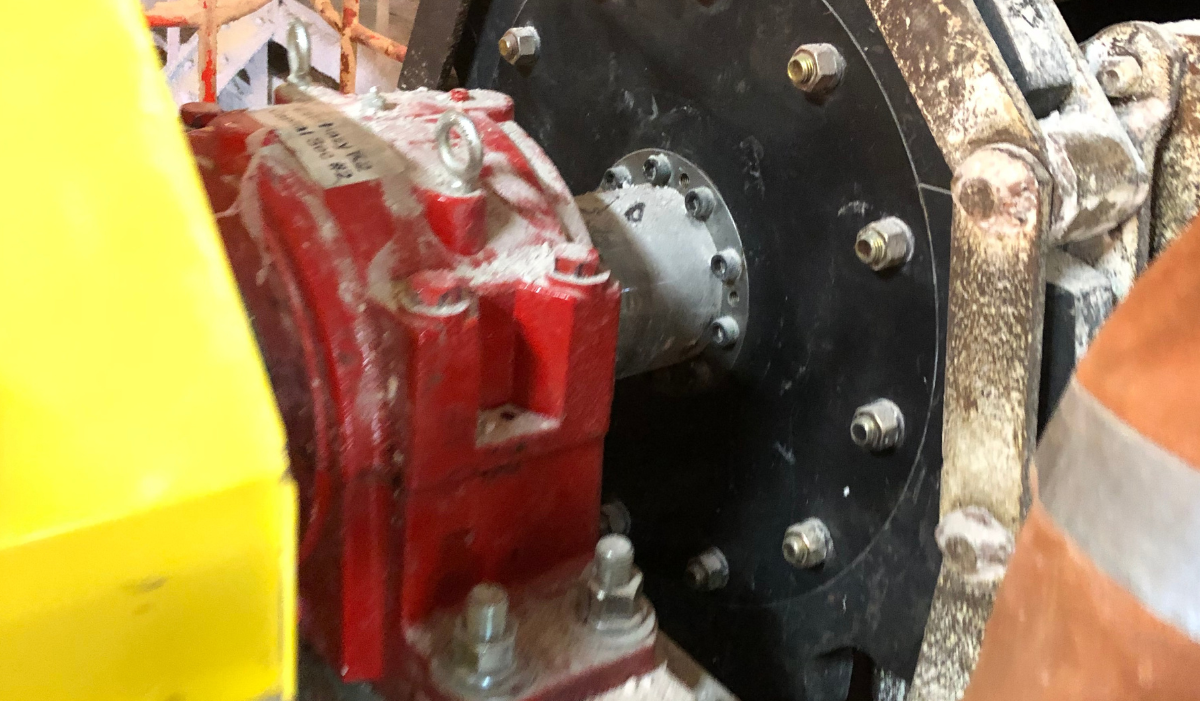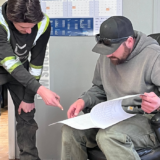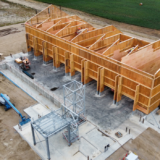Understanding the Complexity of Equipment Installation in Mining Operations
Introduction to Equipment Installation in Mining Operations
Starting off, you might think putting equipment together in mining operations is as simple as connecting few parts. It’s way more intricate than that. Imagine the complexity of assembling a giant puzzle where each piece is crucial and needs to fit perfectly. This is what mining equipment installation is about.
Mining operations depend heavily on big machines like drills, excavators, and conveyors. These pieces do the heavy lifting, quite literally, from extracting resources to moving them. But before any of that begins, these giants must be installed properly. This isn’t just placing equipment on the ground and hitting the ‘on’ switch. It involves careful planning, precision, and understanding the terrain.
The process starts with the site itself – analyzing the geography, understanding the environmental conditions, and making sure the ground can support the installed equipment. It’s about ensuring not only the efficiency of the operation but also the safety of everyone involved.
Then comes the assembly and installation phase, which is no small feat. Many of these machines come in parts, requiring expert teams to assemble them on-site. This is where the knowledge of engineers, technicians, and skilled workers comes into play. They work together, following detailed plans and strict safety protocols, to piece together these mechanical giants.
In short, installing equipment in mining operations is a massive undertaking that requires careful planning, precision, and teamwork. It’s not just about putting pieces together; it’s about laying the foundation for efficient, safe, and productive mining operations. Keep this in mind next time you marvel at the raw materials and resources that come from beneath the earth’s surface. They start their journey with the complex, yet fascinating process of equipment installation.
Key Types of Equipment Used in Mining
In mining operations, equipment is the backbone that helps in extracting and processing materials from the Earth. Here’s a breakdown of the key types of equipment used. Drilling machines are a must-have in mining operations. They help in creating holes in the earth to explore mineral deposits. Next, we have excavators. These heavy-duty machines are used to dig and move large amounts of soil or rock. Bulldozers come into play to clear the ground. They push large heaps of soil or rock out of the way, making space for mining activities. Then there’s blasting tools. These are crucial for breaking down hard materials to get to the minerals. And, let’s not forget about crushing equipment. After materials are mined, they need to be broken down into smaller pieces for further processing. Lastly, conveyor belts. They transport the mined materials to different locations within the mining site for processing or shipping. Each piece of equipment plays a vital role in mining operations, ensuring efficiency and safety.
The Importance of Proper Equipment Installation
In the world of mining operations, getting equipment installed properly is not just important, it’s critical for success. Think about it like this – mining gear is the backbone of the operation. If the backbone’s weak or wrongly set up, everything crumbles. It’s straightforward. Properly installed equipment ensures safety, efficiency, and longevity. Here’s the deal: when machines are installed correctly, they work as they should, cutting down on breakdowns. Fewer breakdowns mean mining operations can keep running smoothly without losing time or money. Safety’s another big one. Mining is already risky. Faulty equipment installation just cranks up that risk level unnecessarily. Plus, when you set up your equipment right, it lasts longer. You’re not just throwing money away on repairs or replacements. So, remember, skimping on installation is like shooting yourself in the foot. It might save you a bit now, but it’ll cost you more down the line. It’s as simple as that.
Preparing for Equipment Installation: A Step-by-Step Guide
Before diving into the equipment’s soil-touching moment, a solid plan ensures smooth sailing. First off, assess the space. Like sizing up a new fridge for your kitchen, ensure the mining equipment will fit not just physically but functionally too. Next, gather your squad – engineers, operators, and anyone else vital for a seamless operation. Their insights are gold. Then, focus on training. Knowing the ins and outs of the new gear isn’t just smart; it’s essential. After the team’s up to speed, dive into the logistics. This stage is all about the details: delivery schedules, installation timeline, and safety procedures. Each piece of the puzzle must fit perfectly to avoid delays or, worse, accidents. Lastly, a dry run doesn’t hurt. Test everything in a controlled environment to catch any hiccups. This step-by-step approach isn’t just about putting equipment into the ground; it’s about laying the foundation for successful mining operations.
Challenges Faced During Mining Equipment Installation
Mining equipment installation is no easy feat. The challenges faced are numerous and can significantly impact both timelines and budgets. First off, the size and weight of mining machinery make transportation and installation a logistical nightmare. Imagine trying to move a giant piece of machinery through narrow roads or rugged terrain. Then, there’s the issue of assembling these large units in confined or hard-to-reach places deep underground.
Environmental conditions present another hurdle. Extreme temperatures, dust, and moisture can not only delay installation but also damage equipment. Safety is a big concern too. Every step must be planned with utmost care to prevent accidents.
Let’s not forget technical complexities. Mining equipment often needs to be integrated with existing systems, requiring in-depth technical knowledge and precise coordination. Plus, with technology constantly evolving, staying up-to-date with the latest advancements is a must.
Lastly, compliance with local regulations can slow things down. Meeting all safety and environmental standards is essential but can add layers of complexity to the installation process.
In a nutshell, installing mining equipment is like solving a giant, complex puzzle where every piece must fit perfectly, considering the risks, technicalities, and regulations involved.
Safety Protocols and Best Practices in Equipment Installation
In mining, installing equipment isn’t just about following instructions. It’s about ensuring everyone goes home safe every day. Safety can’t be an afterthought; it’s the priority from start to finish. Let’s talk simple but crucial steps to keep in mind. First, always start with a safety briefing. Before any tool is picked up, every team member needs to understand the specific safety measures for the task. This includes identifying potential hazards and how to avoid them. Next, wearing the right gear is a no-brainer. Hard hats, safety goggles, gloves, and steel-toed boots are the basics, but depending on the job, you might need more specialized protection. Inspections are key. This means checking equipment before use to ensure it’s in good working order. Faulty machinery isn’t just inefficient; it’s a major risk. And let’s not forget the importance of clear communication. Whether it’s hand signals in noisy environments or walkie-talkies for distance, being able to alert team members to potential dangers can prevent accidents. Finally, always have an emergency plan. If things go south, knowing exactly what to do can make all the difference. Remember, safe equipment installation in mining isn’t just about avoiding accidents. It’s about respect for the team and the job. Safety first, always.
Innovative Technologies Impacting Equipment Installation in Mining
Mining has always faced challenges, but innovative technologies are changing the game, especially in equipment installation. Drones, for example, map out mining areas with precision, allowing for more strategic placement of machinery without stepping foot on the site. Automation takes it a step further. Robots and automated machinery can be installed in harsh environments, reducing the need for human intervention and speeding up the installation process. Then, there’s the Internet of Things (IoT). Equipment connected to IoT can send real-time data to operators, ensuring machinery is installed correctly and operating at peak efficiency from day one. These technologies not only simplify installation processes but also improve safety and efficiency, making mining operations more productive than ever.
Training and Skills Required for Efficient Equipment Installation
To install equipment in mining operations, teams need certain skills and training to get the job done right. It’s not just about being strong or knowing how to use a tool; it’s about understanding the complexity of the machines and the safety standards. First off, workers need technical training. This involves knowing how machinery works and being able to troubleshoot issues. They must be familiar with the machinery they’re installing, from electrical systems to hydraulic pumps.
Safety training is non-negotiable. Mining is risky, and installing equipment adds another layer of danger. Workers need to know how to wear their safety gear correctly, identify hazards, and follow procedures that keep everyone safe.
Teamwork skills are vital. Installation jobs aren’t solo missions. Teams have to communicate clearly and work together to lift, position, and secure heavy machinery. Sometimes, things don’t go as planned, and the team needs to adapt quickly.
Problem-solving is another must-have skill. When a piece isn’t fitting or a machine doesn’t start, workers need to figure out why and how to fix it. This often requires a good understanding of both the equipment and the installation process.
Lastly, attention to detail is critical. Even small mistakes during installation can lead to big problems down the line. Workers need to follow installation guides to the letter and double-check their work.
To sum up, installing equipment in mining operations requires more than just physical strength. It demands a mix of technical knowledge, safety awareness, teamwork, problem-solving, and attention to detail. Without these skills, the risk of accidents increases, and the likelihood of successful equipment installation decreases.
Case Studies: Successful Equipment Installation in Mining Operations
Mining operations are tough and complex. There are stories out there, though, that shine a light on what happens when things go right. These case studies are not just stories; they’re lessons. One standout example comes from a mine in Nevada. They had to install a new conveyor system. It wasn’t just about putting pieces together. They planned meticulously, considering every possible hiccup. The result? Installation was completed ahead of schedule, and the system worked flawlessly from day one. Another case takes us to Australia, where a mining company needed to upgrade its extraction technology. The challenge was immense due to the remote location and the need to keep operations running. They pulled it off by using modular equipment that could be assembled on-site. The upgrade was a success, boosting productivity by 20%. These cases teach us a few things. First, planning makes perfect. Second, the right equipment matters. And third, sometimes, thinking outside the box is the way to go.
Conclusion: Streamlining Equipment Installation for Future Mining Efficiency
Wrapping it all up, making equipment installation in mining operations more straightforward is not just about saving time today; it’s about paving the way for more efficient mining practices in the future. Think about it—less complicated installations mean less downtime, fewer delays, and more mining action. We’re talking about a smoother operation that can adapt quickly to new technologies and challenges. Plus, a streamlined process reduces the risk of errors, and that means safer working conditions for everyone involved. So, by focusing on simplifying installation procedures now, mining operations can ensure they’re not just digging for resources today but are also laying the groundwork for a more productive and safer tomorrow. Remember, every step towards efficiency is a step towards a brighter future for the mining industry.



